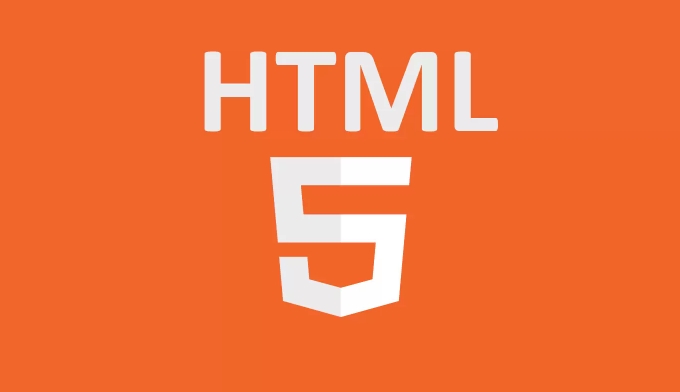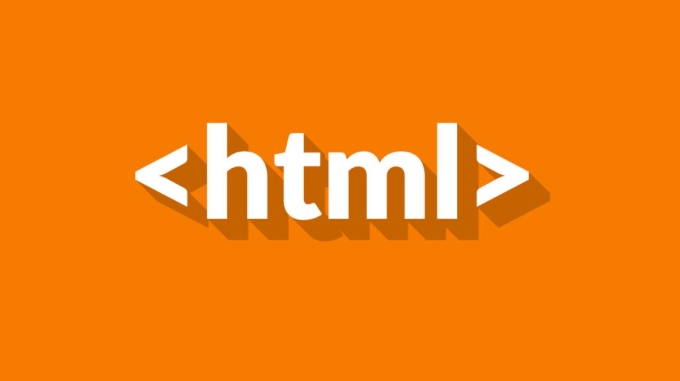There are several common ways to add JavaScript to HTML pages, which can be selected according to your needs. First, inline scripts are suitable for small functions or tests, and they write code directly in HTML, but are not convenient for maintenance; second, external JS files are introduced, with clear structure, conducive to collaboration, and suitable for project development; third, use defer or async attributes to control the loading order to avoid blocking HTML parsing; fourth, dynamically load scripts, loading on demand to improve performance. It is recommended to choose the appropriate method according to the scene, pay attention to the script execution order and loading timing.

It is actually quite straightforward to add JavaScript to HTML pages. The key is to figure out how you want to use it - whether to write a simple script to make the web page move, or to refer to external files more convenient to manage. The following methods are the most commonly used and practical.

Inline scripts: the most direct way
If you just want to add a small piece of code, such as clicking a button and popping a prompt box, you can write the <script></script> tag directly in HTML.

<script>
alert("Page loading is completed!");
</script>This method is suitable for quick testing or small functions, but it is not recommended to be used on large projects because it is difficult to maintain when mixed together.
Note: This code is usually placed before the end of <body> , so that it will wait until the DOM is loaded before executing, which is not easy to make mistakes.

Introduce external JS files: clear structure and better manipulation
If your script is longer, or you want multiple pages to share a piece of code, you should use external files.
First create a script.js file and write your code:
console.log("This script was introduced from the outside");Then quote it in HTML like this:
<script src="script.js"></script>
The advantage of this approach is that HTML and JS are separated, easy to collaborate and debug. Remember to have the right path, otherwise the console will report an error "Resource not found".
Put it in <head> or <body> ? The order is important
By default, when the browser reads <script> it will pause the parsing of HTML, download and execute the script first. If you put <script> in <head> , the page content must wait until the script is executed before it appears.
So the general advice:
- Put the script at the end of
<body>(before closing the tag), so that the HTML content is loaded first. - If you have to put
<head>, you can add adeferorasyncattribute to<script>:-
defer: wait until the HTML is parsed before executing, keeping the order -
async: HTML is not blocked when downloading, but the execution order is uncertain
-
These two properties are only valid for external scripts.
Dynamic loading scripts: more efficient loading on demand
Sometimes you don't want to load all scripts at the beginning, but wait for an action to trigger before loading, such as clicking a button or scrolling to the bottom.
You can use JS to create <script> tags dynamically:
const script = document.createElement('script'); script.src = 'lazy-script.js'; document.body.appendChild(script);
This can reduce the initial loading time and improve performance, especially suitable for large projects or third-party plug-ins.
Basically these are the methods. Which scenario to choose depends on: simple tests are used for inline, project development is used for external links, and loading optimization is based on defer/async or dynamic loading. The uncomplexing but easy to ignore is the script execution order and loading time. Don't just throw scripts into the head as soon as you come up.
The above is the detailed content of How to add JavaScript to an HTML page. For more information, please follow other related articles on the PHP Chinese website!

Hot AI Tools

Undress AI Tool
Undress images for free

Undresser.AI Undress
AI-powered app for creating realistic nude photos

AI Clothes Remover
Online AI tool for removing clothes from photos.

Clothoff.io
AI clothes remover

Video Face Swap
Swap faces in any video effortlessly with our completely free AI face swap tool!

Hot Article

Hot Tools

Notepad++7.3.1
Easy-to-use and free code editor

SublimeText3 Chinese version
Chinese version, very easy to use

Zend Studio 13.0.1
Powerful PHP integrated development environment

Dreamweaver CS6
Visual web development tools

SublimeText3 Mac version
God-level code editing software (SublimeText3)
 Implementing Clickable Buttons Using the HTML button Element
Jul 07, 2025 am 02:31 AM
Implementing Clickable Buttons Using the HTML button Element
Jul 07, 2025 am 02:31 AM
To use HTML button elements to achieve clickable buttons, you must first master its basic usage and common precautions. 1. Create buttons with tags and define behaviors through type attributes (such as button, submit, reset), which is submitted by default; 2. Add interactive functions through JavaScript, which can be written inline or bind event listeners through ID to improve maintenance; 3. Use CSS to customize styles, including background color, border, rounded corners and hover/active status effects to enhance user experience; 4. Pay attention to common problems: make sure that the disabled attribute is not enabled, JS events are correctly bound, layout occlusion, and use the help of developer tools to troubleshoot exceptions. Master this
 Configuring Document Metadata Within the HTML head Element
Jul 09, 2025 am 02:30 AM
Configuring Document Metadata Within the HTML head Element
Jul 09, 2025 am 02:30 AM
Metadata in HTMLhead is crucial for SEO, social sharing, and browser behavior. 1. Set the page title and description, use and keep it concise and unique; 2. Add OpenGraph and Twitter card information to optimize social sharing effects, pay attention to the image size and use debugging tools to test; 3. Define the character set and viewport settings to ensure multi-language support is adapted to the mobile terminal; 4. Optional tags such as author copyright, robots control and canonical prevent duplicate content should also be configured reasonably.
 Best HTML tutorial for beginners in 2025
Jul 08, 2025 am 12:25 AM
Best HTML tutorial for beginners in 2025
Jul 08, 2025 am 12:25 AM
TolearnHTMLin2025,chooseatutorialthatbalanceshands-onpracticewithmodernstandardsandintegratesCSSandJavaScriptbasics.1.Prioritizehands-onlearningwithstep-by-stepprojectslikebuildingapersonalprofileorbloglayout.2.EnsureitcoversmodernHTMLelementssuchas,
 HTML for email templates tutorial
Jul 10, 2025 pm 02:01 PM
HTML for email templates tutorial
Jul 10, 2025 pm 02:01 PM
How to make HTML mail templates with good compatibility? First, you need to build a structure with tables to avoid using div flex or grid layout; secondly, all styles must be inlined and cannot rely on external CSS; then the picture should be added with alt description and use a public URL, and the buttons should be simulated with a table or td with background color; finally, you must test and adjust the details on multiple clients.
 How to associate captions with images or media using the html figure and figcaption elements?
Jul 07, 2025 am 02:30 AM
How to associate captions with images or media using the html figure and figcaption elements?
Jul 07, 2025 am 02:30 AM
Using HTML sums allows for intuitive and semantic clarity to add caption text to images or media. 1. Used to wrap independent media content, such as pictures, videos or code blocks; 2. It is placed as its explanatory text, and can be located above or below the media; 3. They not only improve the clarity of the page structure, but also enhance accessibility and SEO effect; 4. When using it, you should pay attention to avoid abuse, and apply to content that needs to be emphasized and accompanied by description, rather than ordinary decorative pictures; 5. The alt attribute that cannot be ignored, which is different from figcaption; 6. The figcaption is flexible and can be placed at the top or bottom of the figure as needed. Using these two tags correctly helps to build semantic and easy to understand web content.
 How to handle forms submission in HTML without a server?
Jul 09, 2025 am 01:14 AM
How to handle forms submission in HTML without a server?
Jul 09, 2025 am 01:14 AM
When there is no backend server, HTML form submission can still be processed through front-end technology or third-party services. Specific methods include: 1. Use JavaScript to intercept form submissions to achieve input verification and user feedback, but the data will not be persisted; 2. Use third-party serverless form services such as Formspree to collect data and provide email notification and redirection functions; 3. Use localStorage to store temporary client data, which is suitable for saving user preferences or managing single-page application status, but is not suitable for long-term storage of sensitive information.
 What are the most commonly used global attributes in html?
Jul 10, 2025 am 10:58 AM
What are the most commonly used global attributes in html?
Jul 10, 2025 am 10:58 AM
class, id, style, data-, and title are the most commonly used global attributes in HTML. class is used to specify one or more class names to facilitate style setting and JavaScript operations; id provides unique identifiers for elements, suitable for anchor jumps and JavaScript control; style allows for inline styles to be added, suitable for temporary debugging but not recommended for large-scale use; data-properties are used to store custom data, which is convenient for front-end and back-end interaction; title is used to add mouseover prompts, but its style and behavior are limited by the browser. Reasonable selection of these attributes can improve development efficiency and user experience.
 Implementing Native Lazy Loading for Images in HTML
Jul 12, 2025 am 12:48 AM
Implementing Native Lazy Loading for Images in HTML
Jul 12, 2025 am 12:48 AM
Native lazy loading is a built-in browser function that enables lazy loading of pictures by adding loading="lazy" attribute to the tag. 1. It does not require JavaScript or third-party libraries, and is used directly in HTML; 2. It is suitable for pictures that are not displayed on the first screen below the page, picture gallery scrolling add-ons and large picture resources; 3. It is not suitable for pictures with first screen or display:none; 4. When using it, a suitable placeholder should be set to avoid layout jitter; 5. It should optimize responsive image loading in combination with srcset and sizes attributes; 6. Compatibility issues need to be considered. Some old browsers do not support it. They can be used through feature detection and combined with JavaScript solutions.






